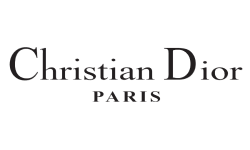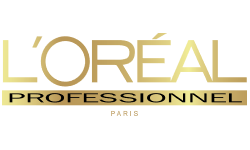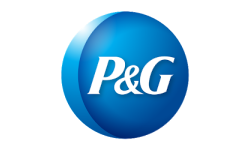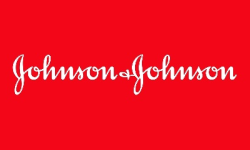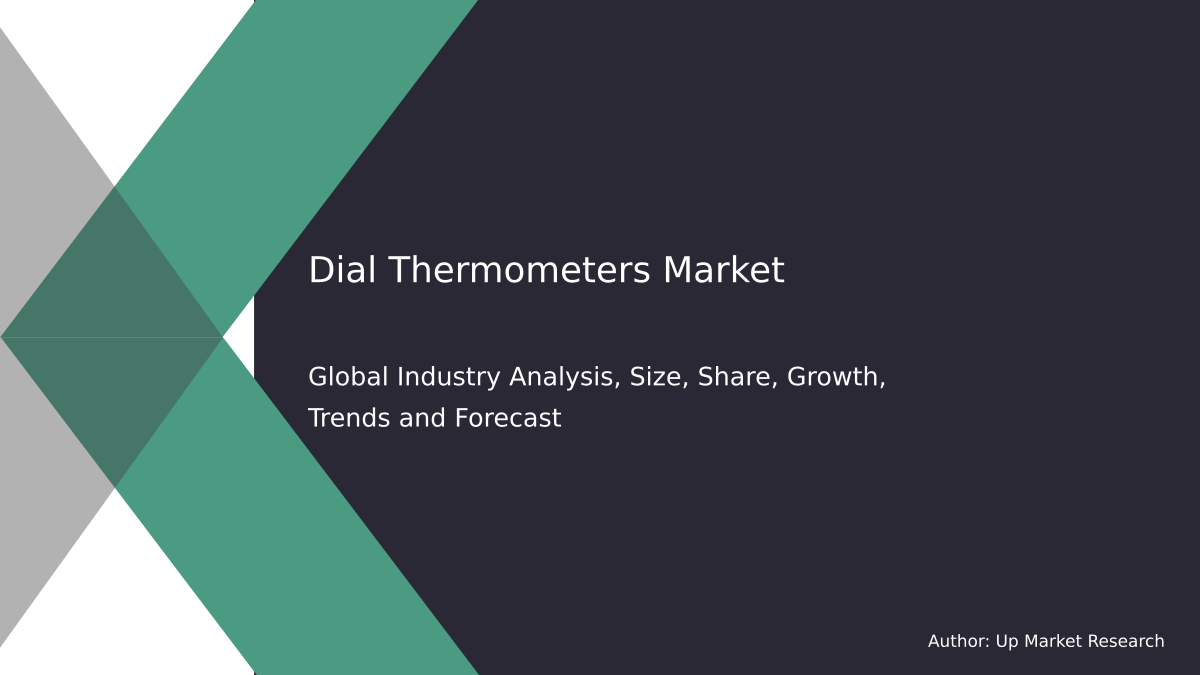
Global Luxury Travel Market by Age Group (Baby Boomers, Millennial), by Tour (Safari & Adventure, Culinary Travel & Shopping) and Region (North America, Latin America, Europe, Asia Pacific and Middle East & Africa), Forecast To 2028
Summary of the Report
In 2018, the global luxury travel market was worth USD 1.8 trillion. It is forecast to grow at a 4.6% CAGR over the forecast period. The market will be driven by rising disposable income, consumer spending, the growing demand for travel memories, increased micro trips and emerging tourism and corporate sectors around the world.
The primary benchmark for luxury travel is the preference of travelers for personal service, reliable transportation, exclusivity, positive and professional interaction with staff. People are more comfortable choosing destinations that reflect their gender, ethnicity and sexual orientation. There is less hustle when it comes to getting visas. Long-haul travelers want to design their own holiday, and they are looking for flexible itineraries that offer both entertainment and relaxation. Travelers are now more comfortable and have more experience because of this personalization requirement.
To gain knowledge and experience new cultures, elite travelers prefer to travel to unexplored locations. They are also planning trips that include cultural visits, cruise, and adventure activities, prioritizing experience over possession. The market is growing because travelers now value access more than acquisition and experience more than possession. The market is set to grow with micro trips, a new trend in the sector. Travelers are finding it easier to squeeze more travel itineraries into a shorter time frame. In the future, it will be fashionable to stay in unique and exceptional accommodation for short vacations.
Online research is expected to drive market growth in the forecast period. The demand for high-tech rooms (smart bedrooms) is expected to rise over the forecast period. This will allow travelers full control over their accommodation and travel mode. The market is growing thanks to the increasing use of the internet, and the availability of social media. Users-generated content is more influential than traditional advertising. Additionally, the popularity of travel storytelling via social media platforms such as Instagram, Facebook, or blogging sites has increased exponentially.
Tour Insights
The luxury travel market can be divided into customized and private vacations as well as cruises, yachting and small-ship expeditions. There are also celebration travels, culinary travel, shopping, and other options. Luxury travelers seek more knowledge and experience to better understand local cultures, feel adventure and live in a less crowded environment. Safari and adventure was the most popular segment, with 35.3% of the market. All age groups are increasingly interested in personalized vacations that focus on safari and adventure. This segment is experiencing rapid growth.
Luxury travel does not only include luxury accommodations and pools. Luxury travel has been redefined by changing values, attitudes, and ages. With a CAGR rate of 5.5%, shopping and culinary travel are the fastest growing segments. Culinary travel's primary goal is to discover the local cuisine and culture. Participants are taking cooking classes, visiting historical culinary routes, tasting wine, beer and spirits trails, going to festivals and food fairs, and visiting food processing centers and food plants for exploratory purposes. Travelers are increasingly drawn to cooking shows on TV and online, which encourage them to explore local cuisines.
Age Group Insights
The luxury travel market can be divided into three groups based on age: millennials, baby boomers and generation x. With a CAGR rate of 5.4%, the fastest-growing segment is expected to be Millennials. Millennials value luxury and meaningful consumption more than owing stuff. They are more independent in their religious and politics, less likely than other generations to be married, more distrustful of authority and more travel-oriented. The millennial generation is shifting from traditional pampering to more compelling experiences.
In 2018, the global revenue of baby boomers was more than 40%. The largest market share for the future is expected to be held by the Baby Boomers. This is due to the fact that they are more educated, wealthy, independent, healthier, and have more leisure time. They are flexible with their budgets and can use technology to save time and make luxury travel planning easier. Independent travelers, the Baby Boomers, have seen many places and no child responsibilities. They also have a broad bucket list that includes a long vacation on a luxury cruise ship, exotic ports, a safari, and multiple adventures.
Regional Insights
In 2018, North America was the largest regional market and this trend will continue in the future. With a market share of 85.5%, the United States was the largest shareholder in 2018. This is due to North America being a major financial hub and a popular tourist destination. The market is expected to grow in the future by promoting shorter trips than long haul trips.
Asia Pacific will be the fastest-growing region market during the forecast period. Luxury travel is attracting more customers due to rising spending power and improved living standards. As more money is injected into the economy, luxury travel is becoming more popular for corporate events, corporate stays and leisure trips. Market growth will be slow or steady in countries that are experiencing political instability, economic crisis, and strict Foreign Direct Investment (FDI), regulations.
Market Share Insights & Key Companies
TU Elite, TCS World Travel, Abercrombie & Kent USA, TUI Group; Micato Safaris.
To expand their geographic reach, market players are entering into strategic partnerships and mergers and acquisitions (M&A). As an example, Lindblad Expeditions, Inc. and Capitol Acquisition Corp. II merged in July 2015. This will give it attractive growth opportunities, including expanded charters and new shipbuilds. Lindblad is a global leader for expedition cruising and luxury travel experiences. It partners with National Geographic.
Luxury Travel Market Report Scope
The Report Covers Certain Segments
This report predicts revenue growth at all levels, including the country, regional and global. It also provides analysis of industry trends for each sub-segment from 2015 to 2025. Grand View Research has divided the global luxury travel market report based on tour, age group and region.
-
Tour Outlook (Revenue, USD Billion, 2015 - 2025)
-
Customized and Private Vacations
-
Safari & Adventure
-
Small Ship Expeditions, Yachting, and Cruises
-
Celebration Journeys
-
Culinary Travel & Shopping
-
Other
-
-
Age Group Outlook (Revenue, USD Billion, 2015 - 2025)
-
Millennial
-
Generation X
-
Baby Boomers
-
Silver Hair
-
-
Regional Outlook (Revenue USD Billion, 2015-2025)
-
North America
-
The U.S.
-
-
Europe
-
U.K.
-
Germany
-
-
Asia Pacific
-
China
-
India
-
-
Central & South America
-
Brazil
-
-
Middle East & Africa
-
South Africa
-
-
These are the most frequently asked questions about this report
What is the size of the luxury travel marketb. Global luxury travel market was valued at USD 1,907.95 Billion in 2019. It is projected to grow to USD 1,993.81 Billion by 2020.
What is the growth rate of luxury travel?b. Global luxury travel market will grow at a compound annual rate of 4.6% between 2019 and 2025, reaching USD 2,506.12 trillion by 2025.
Which segment had the largest share of luxury travel?b. With a 40.2% share in 2019, North America was the dominant market for luxury travel. This can be attributed to increased consumer spending in tourism countries such as the U.S. or Canada.
What are the major players in the luxury travel market?b. Among the key players in the luxury travel market are TU Elite, TCS World Travel, Abercrombie & Kent USA and TUI Group.
What are the driving factors of the luxury travel marketb. The growth of the luxury travel market is being driven by two key factors: the continuing trend in travel storytelling and rising disposable income globally.
Up Market Research published a new report titled “Luxury Travel Market research report which is segmented by Age Group (Baby Boomers, Millennial), by Tour (Safari & Adventure, Culinary Travel & Shopping), By Players/Companies TÅ“ Elite; TCS World Travel; Abercrombie & Kent USA; TUI Group; Micato Safaris; Butterfield & Robinson Inc; Scott Dunn Ltd; Cox & Kings Ltd; Exodus travels; and Lindblad Expeditions”. As per the study the market is expected to grow at a CAGR of XX% in the forecast period.
| Report Attributes | Report Details |
| Report Title | Luxury Travel Market Research Report |
| By Age Group | Baby Boomers, Millennial |
| By Tour | Safari & Adventure, Culinary Travel & Shopping |
| By Companies | TÅ“ Elite; TCS World Travel; Abercrombie & Kent USA; TUI Group; Micato Safaris; Butterfield & Robinson Inc; Scott Dunn Ltd; Cox & Kings Ltd; Exodus travels; and Lindblad Expeditions |
| Regions Covered | North America, Europe, APAC, Latin America, MEA |
| Base Year | 2020 |
| Historical Year | 2018 to 2019 (Data from 2010 can be provided as per availability) |
| Forecast Year | 2028 |
| Number of Pages | 229 |
| Number of Tables & Figures | 161 |
| Customization Available | Yes, the report can be customized as per your need. |
The report covers comprehensive data on emerging trends, market drivers, growth opportunities, and restraints that can change the market dynamics of the industry. It provides an in-depth analysis of the market segments which include products, applications, and competitor analysis.

Global Luxury Travel Market Report Segments:
The market is segmented by Age Group (Baby Boomers, Millennial), by Tour (Safari & Adventure, Culinary Travel & Shopping).
Luxury Travel Market research report delivers a close watch on leading competitors with strategic analysis, micro and macro market trend and scenarios, pricing analysis and a holistic overview of the market situations in the forecast period. It is a professional and a detailed report focusing on primary and secondary drivers, market share, leading segments and geographical analysis. Further, key players, major collaborations, merger & acquisitions along with trending innovation and business policies are reviewed in the report.
Key Benefits for Industry Participants & Stakeholders:
- Industry drivers, restraints, and opportunities covered in the study
- Neutral perspective on the market performance
- Recent industry trends and developments
- Competitive landscape & strategies of key players
- Potential & niche segments and regions exhibiting promising growth covered
- Historical, current, and projected market size, in terms of value
- In-depth analysis of the Luxury Travel Market
Overview of the regional outlook of the Luxury Travel Market:
Based on region, the market is segmented into North America, Europe, Asia Pacific, Latin America and Middle East & Africa (MEA). North America region is further bifurcated into countries such as U.S., and Canada. The Europe region is further categorized into U.K., France, Germany, Italy, Spain, Russia, and Rest of Europe. Asia Pacific is further segmented into China, Japan, South Korea, India, Australia, South East Asia, and Rest of Asia Pacific. Latin America region is further segmented into Brazil, Mexico, and Rest of Latin America, and the MEA region is further divided into GCC, Turkey, South Africa, and Rest of MEA.

Highlights of The Luxury Travel Market Report:
- The market structure and projections for the coming years.
- Drivers, restraints, opportunities, and current trends of Luxury Travel Market.
- Historical data and forecast.
- Estimations for the forecast period 2028.
- Developments and trends in the market.
1. Baby Boomers
2. Millennial
7. By Tour:1. Safari & Adventure
2. Culinary Travel & Shopping
- Market scenario by region, sub-region, and country.
- Market share of the market players, company profiles, product specifications, SWOT analysis, and competitive landscape.
- Analysis regarding upstream raw materials, downstream demand, and current market dynamics.
- Government Policies, Macro & Micro economic factors are also included in the report.
We have studied the Luxury Travel Market in 360 degrees via. both primary & secondary research methodologies. This helped us in building an understanding of the current market dynamics, supply-demand gap, pricing trends, product preferences, consumer patterns & so on. The findings were further validated through primary research with industry experts & opinion leaders across countries. The data is further compiled & validated through various market estimation & data validation methodologies. Further, we also have our in-house data forecasting model to predict market growth up to 2028.
How you may use our products:
- Correctly Positioning New Products
- Market Entry Strategies
- Business Expansion Strategies
- Consumer Insights
- Understanding Competition Scenario
- Product & Brand Management
- Channel & Customer Management
- Identifying Appropriate Advertising Appeals

Reasons to Purchase the Luxury Travel Market Report:
- The report includes a plethora of information such as market dynamics scenario and opportunities during the forecast period
- Segments and sub-segments include quantitative, qualitative, value (USD Million,) and volume (Units Million) data.
- Regional, sub-regional, and country level data includes the demand and supply forces along with their influence on the market.
- The competitive landscape comprises share of key players, new developments, and strategies in the last three years.
- Comprehensive companies offering products, relevant financial information, recent developments, SWOT analysis, and strategies by these players.
Chapter 2 Assumptions and Acronyms Used
Chapter 3 Research Methodology
Chapter 4 Luxury Travel Market Overview
4.1 Introduction
4.1.1 Market Taxonomy
4.1.2 Market Definition
4.1.3 Macro-Economic Factors Impacting the Market Growth
4.2 Luxury Travel Market Dynamics
4.2.1 Market Drivers
4.2.2 Market Restraints
4.2.3 Market Opportunity
4.3 Luxury Travel Market - Supply Chain Analysis
4.3.1 List of Key Suppliers
4.3.2 List of Key Distributors
4.3.3 List of Key Consumers
4.4 Key Forces Shaping the Luxury Travel Market
4.4.1 Bargaining Power of Suppliers
4.4.2 Bargaining Power of Buyers
4.4.3 Threat of Substitution
4.4.4 Threat of New Entrants
4.4.5 Competitive Rivalry
4.5 Global Luxury Travel Market Size & Forecast, 2018-2028
4.5.1 Luxury Travel Market Size and Y-o-Y Growth
4.5.2 Luxury Travel Market Absolute $ Opportunity
Chapter 5 Global Luxury Travel Market Analysis and Forecast by Age Group
5.1 Introduction
5.1.1 Key Market Trends & Growth Opportunities by Age Group
5.1.2 Basis Point Share (BPS) Analysis by Age Group
5.1.3 Absolute $ Opportunity Assessment by Age Group
5.2 Luxury Travel Market Size Forecast by Age Group
5.2.1 Baby Boomers
5.2.2 Millennial
5.3 Market Attractiveness Analysis by Age Group
Chapter 6 Global Luxury Travel Market Analysis and Forecast by Tour
6.1 Introduction
6.1.1 Key Market Trends & Growth Opportunities by Tour
6.1.2 Basis Point Share (BPS) Analysis by Tour
6.1.3 Absolute $ Opportunity Assessment by Tour
6.2 Luxury Travel Market Size Forecast by Tour
6.2.1 Safari & Adventure
6.2.2 Culinary Travel & Shopping
6.3 Market Attractiveness Analysis by Tour
Chapter 7 Global Luxury Travel Market Analysis and Forecast by Region
7.1 Introduction
7.1.1 Key Market Trends & Growth Opportunities by Region
7.1.2 Basis Point Share (BPS) Analysis by Region
7.1.3 Absolute $ Opportunity Assessment by Region
7.2 Luxury Travel Market Size Forecast by Region
7.2.1 North America
7.2.2 Europe
7.2.3 Asia Pacific
7.2.4 Latin America
7.2.5 Middle East & Africa (MEA)
7.3 Market Attractiveness Analysis by Region
Chapter 8 Coronavirus Disease (COVID-19) Impact
8.1 Introduction
8.2 Current & Future Impact Analysis
8.3 Economic Impact Analysis
8.4 Government Policies
8.5 Investment Scenario
Chapter 9 North America Luxury Travel Analysis and Forecast
9.1 Introduction
9.2 North America Luxury Travel Market Size Forecast by Country
9.2.1 U.S.
9.2.2 Canada
9.3 Basis Point Share (BPS) Analysis by Country
9.4 Absolute $ Opportunity Assessment by Country
9.5 Market Attractiveness Analysis by Country
9.6 North America Luxury Travel Market Size Forecast by Age Group
9.6.1 Baby Boomers
9.6.2 Millennial
9.7 Basis Point Share (BPS) Analysis by Age Group
9.8 Absolute $ Opportunity Assessment by Age Group
9.9 Market Attractiveness Analysis by Age Group
9.10 North America Luxury Travel Market Size Forecast by Tour
9.10.1 Safari & Adventure
9.10.2 Culinary Travel & Shopping
9.11 Basis Point Share (BPS) Analysis by Tour
9.12 Absolute $ Opportunity Assessment by Tour
9.13 Market Attractiveness Analysis by Tour
Chapter 10 Europe Luxury Travel Analysis and Forecast
10.1 Introduction
10.2 Europe Luxury Travel Market Size Forecast by Country
10.2.1 Germany
10.2.2 France
10.2.3 Italy
10.2.4 U.K.
10.2.5 Spain
10.2.6 Russia
10.2.7 Rest of Europe
10.3 Basis Point Share (BPS) Analysis by Country
10.4 Absolute $ Opportunity Assessment by Country
10.5 Market Attractiveness Analysis by Country
10.6 Europe Luxury Travel Market Size Forecast by Age Group
10.6.1 Baby Boomers
10.6.2 Millennial
10.7 Basis Point Share (BPS) Analysis by Age Group
10.8 Absolute $ Opportunity Assessment by Age Group
10.9 Market Attractiveness Analysis by Age Group
10.10 Europe Luxury Travel Market Size Forecast by Tour
10.10.1 Safari & Adventure
10.10.2 Culinary Travel & Shopping
10.11 Basis Point Share (BPS) Analysis by Tour
10.12 Absolute $ Opportunity Assessment by Tour
10.13 Market Attractiveness Analysis by Tour
Chapter 11 Asia Pacific Luxury Travel Analysis and Forecast
11.1 Introduction
11.2 Asia Pacific Luxury Travel Market Size Forecast by Country
11.2.1 China
11.2.2 Japan
11.2.3 South Korea
11.2.4 India
11.2.5 Australia
11.2.6 South East Asia (SEA)
11.2.7 Rest of Asia Pacific (APAC)
11.3 Basis Point Share (BPS) Analysis by Country
11.4 Absolute $ Opportunity Assessment by Country
11.5 Market Attractiveness Analysis by Country
11.6 Asia Pacific Luxury Travel Market Size Forecast by Age Group
11.6.1 Baby Boomers
11.6.2 Millennial
11.7 Basis Point Share (BPS) Analysis by Age Group
11.8 Absolute $ Opportunity Assessment by Age Group
11.9 Market Attractiveness Analysis by Age Group
11.10 Asia Pacific Luxury Travel Market Size Forecast by Tour
11.10.1 Safari & Adventure
11.10.2 Culinary Travel & Shopping
11.11 Basis Point Share (BPS) Analysis by Tour
11.12 Absolute $ Opportunity Assessment by Tour
11.13 Market Attractiveness Analysis by Tour
Chapter 12 Latin America Luxury Travel Analysis and Forecast
12.1 Introduction
12.2 Latin America Luxury Travel Market Size Forecast by Country
12.2.1 Brazil
12.2.2 Mexico
12.2.3 Rest of Latin America (LATAM)
12.3 Basis Point Share (BPS) Analysis by Country
12.4 Absolute $ Opportunity Assessment by Country
12.5 Market Attractiveness Analysis by Country
12.6 Latin America Luxury Travel Market Size Forecast by Age Group
12.6.1 Baby Boomers
12.6.2 Millennial
12.7 Basis Point Share (BPS) Analysis by Age Group
12.8 Absolute $ Opportunity Assessment by Age Group
12.9 Market Attractiveness Analysis by Age Group
12.10 Latin America Luxury Travel Market Size Forecast by Tour
12.10.1 Safari & Adventure
12.10.2 Culinary Travel & Shopping
12.11 Basis Point Share (BPS) Analysis by Tour
12.12 Absolute $ Opportunity Assessment by Tour
12.13 Market Attractiveness Analysis by Tour
Chapter 13 Middle East & Africa (MEA) Luxury Travel Analysis and Forecast
13.1 Introduction
13.2 Middle East & Africa (MEA) Luxury Travel Market Size Forecast by Country
13.2.1 Saudi Arabia
13.2.2 South Africa
13.2.3 UAE
13.2.4 Rest of Middle East & Africa (MEA)
13.3 Basis Point Share (BPS) Analysis by Country
13.4 Absolute $ Opportunity Assessment by Country
13.5 Market Attractiveness Analysis by Country
13.6 Middle East & Africa (MEA) Luxury Travel Market Size Forecast by Age Group
13.6.1 Baby Boomers
13.6.2 Millennial
13.7 Basis Point Share (BPS) Analysis by Age Group
13.8 Absolute $ Opportunity Assessment by Age Group
13.9 Market Attractiveness Analysis by Age Group
13.10 Middle East & Africa (MEA) Luxury Travel Market Size Forecast by Tour
13.10.1 Safari & Adventure
13.10.2 Culinary Travel & Shopping
13.11 Basis Point Share (BPS) Analysis by Tour
13.12 Absolute $ Opportunity Assessment by Tour
13.13 Market Attractiveness Analysis by Tour
Chapter 14 Competition Landscape
14.1 Luxury Travel Market: Competitive Dashboard
14.2 Global Luxury Travel Market: Market Share Analysis, 2019
14.3 Company Profiles (Details – Overview, Financials, Developments, Strategy)
14.3.1 Tœ Elite; TCS World Travel; Abercrombie & Kent USA; TUI Group; Micato Safaris; Butterfield & Robinson Inc; Scott Dunn Ltd; Cox & Kings Ltd; Exodus travels; and Lindblad Expeditions
The global Luxury Travel market has been segmented based on
By Age Group
- Baby Boomers
- Millennial
- Safari & Adventure
- Culinary Travel & Shopping
- Asia Pacific
- North America
- Latin America
- Europe
- Middle East & Africa
- Tœ Elite; TCS World Travel; Abercrombie & Kent USA; TUI Group; Micato Safaris; Butterfield & Robinson Inc; Scott Dunn Ltd; Cox & Kings Ltd; Exodus travels; and Lindblad Expeditions
Related Reports
Some other reports from this category!


